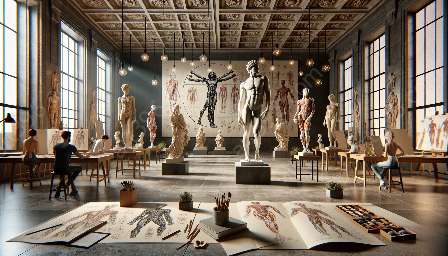Understanding the human figure in motion is crucial for artists, especially those interested in figure drawing and artistic anatomy. This topic cluster will delve into different techniques and approaches for capturing the dynamic nature of the human form.
Gesture Drawing
Gesture drawing is a foundational technique for capturing the human figure in motion. It involves quickly sketching the essence of movement and poses rather than focusing on details. Through rapid and expressive lines, artists can convey the energy and flow of the human body in motion. This technique encourages artists to observe and understand the underlying structure and movement of the figure.
Line of Action
The line of action is a vital concept for capturing the human figure in motion. It represents an imaginary line that flows through the main action or movement of the figure. By identifying and emphasizing this line, artists can create drawings that effectively convey movement and gesture. Understanding the line of action helps artists create dynamic and engaging poses that capture the essence of motion.
Anatomical Proportions and Structure
When capturing the human figure in motion, it's essential to have a solid grasp of artistic anatomy and anatomical proportions. Artists need to understand how the body's muscles, bones, and joints work together during movement. By applying their knowledge of anatomy, artists can accurately depict the way the body shifts and stretches in various dynamic poses.
Dynamic Poses and Foreshortening
Capturing dynamic poses and foreshortening are techniques that add depth and dimension to drawings of the human figure in motion. Dynamic poses involve depicting the body in extreme or exaggerated positions, highlighting the sense of movement and vitality. Foreshortening, on the other hand, involves creating the illusion of depth by depicting an object or body part at an angle to the picture plane.
Understanding Weight and Balance
When capturing the human figure in motion, artists must convey the sense of weight and balance in their drawings. Whether a figure is running, jumping, or dancing, understanding how weight is distributed and balanced within the body is crucial for creating realistic and convincing depictions of motion.
Exploring Different Mediums
Experimenting with different artistic mediums can also enhance the depiction of the human figure in motion. From charcoal and graphite to ink and digital tools, each medium offers unique opportunities for capturing movement and expression. Understanding the characteristics of different mediums can help artists convey the energy and vitality of the human figure in motion.
Conclusion
By mastering the techniques for capturing the human figure in motion, artists can breathe life into their figure drawings and gain a deeper understanding of artistic anatomy. Gesture drawing, line of action, anatomical proportions, dynamic poses, and exploration of different mediums are just a few of the key techniques that artists can utilize to convey the dynamic and expressive nature of the human form in motion.

